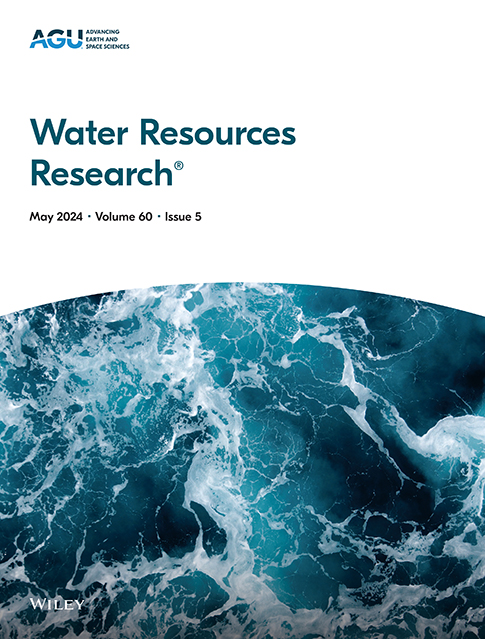利用频率、持续时间和震级指标对地下水位目标进行多重地下水管理目标评价
IF 4.6
1区 地球科学
Q2 ENVIRONMENTAL SCIENCES
引用次数: 0
摘要
由于地下水超采和内涝,地下水资源管理面临重大挑战。确定地下水位阈值对于确定地下水位是否符合有利于社会生态系统健康的范围至关重要。然而,现有研究往往忽略了多重保护靶点、不同季节的优势靶点以及阈值的空间变化。污水处理量超过污水处理量阈值范围的长期影响也需要进一步探讨。在这里,我们提出了一个新的框架来计算跨季节的网格规模阈值,包含多个目标。该框架计算频率、持续时间和震级指标,提供了几十年来多个地下水管理目标的评估。将该框架应用于中国洮尔河下游,发现非生长期和生长期浅层阈值深度分别为1.16 ~ 2.05 m和1.16 ~ 4.05 m,而深层阈值深度分别为6.28 ~ 33.54 m和1.96 ~ 30.72 m。与历史情景相比,气候变化情景表现出最小的频率变化,但持续时间和幅度显著恶化。在气候变化和强化抽水情景下,海侵持续时间超过12个月的网格扩展了1-2倍,而超过WTD阈值2米的网格增加了37%-81%。地下水抽水每增加20%,其频率、持续时间和强度分别平均上升151%、224%和147%。此外,1%-6%的电网面临地下水储量减少和内涝的双重挑战。这些发现可以为各种潜在未来的地下水资源管理提供信息。本文章由计算机程序翻译,如有差异,请以英文原文为准。
Evaluation of Multiple Groundwater Management Targets by Applying Frequency, Duration, and Magnitude Metrics to Water Table Depth Targets
Groundwater resource management faces significant challenges due to groundwater overdraft and waterlogging. Establishing thresholds of the water table depth (WTD) is crucial to ascertain whether WTDs align with ranges conducive to the health of social-ecological systems. However, existing studies often overlook multiple protection targets, dominant targets across different seasons, and spatial variations of thresholds. The long-term effects of WTDs exceeding threshold ranges of the WTD also need to be further explored. Here we propose a novel framework for calculating grid-scale thresholds across seasons, incorporating multiple targets. This framework calculates frequency, duration, and magnitude metrics, offering an evaluation of multiple groundwater management targets over decades. We apply this framework to the lower Tao'er River Basin in China, revealing threshold depths for shallow water tables ranges of 1.16–2.05 m and 1.16–4.05 m during non-growth and growth periods, while threshold depths for deep water tables ranges from 6.28–33.54 m and 1.96–30.72 m, respectively. Climate change scenarios demonstrate minimal frequency changes but significant deterioration in duration and magnitude compared to the historical scenario. Grids with duration of transgressions more than 12 months expand by 1–2 times, while grids exceeding thresholds of the WTD by 2 m increase by 37%–81% under climate change and intensified pumping scenarios. A 20% increase in groundwater pumping leads to an average rise of 151%, 224%, and 147% deterioration in frequency, duration, and magnitude. Furthermore, 1%–6% of grids face dual challenges of groundwater storage reduction and waterlogging. These findings can inform groundwater resource management under various potential futures.
求助全文
通过发布文献求助,成功后即可免费获取论文全文。
去求助
来源期刊

Water Resources Research
环境科学-湖沼学
CiteScore
8.80
自引率
13.00%
发文量
599
审稿时长
3.5 months
期刊介绍:
Water Resources Research (WRR) is an interdisciplinary journal that focuses on hydrology and water resources. It publishes original research in the natural and social sciences of water. It emphasizes the role of water in the Earth system, including physical, chemical, biological, and ecological processes in water resources research and management, including social, policy, and public health implications. It encompasses observational, experimental, theoretical, analytical, numerical, and data-driven approaches that advance the science of water and its management. Submissions are evaluated for their novelty, accuracy, significance, and broader implications of the findings.
 求助内容:
求助内容: 应助结果提醒方式:
应助结果提醒方式:


